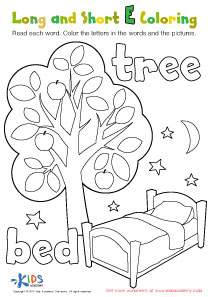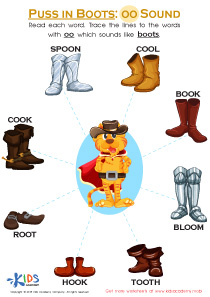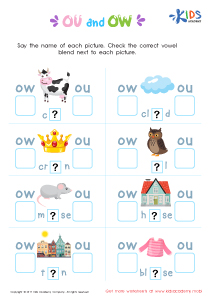Reading comprehension Normal Long And Short Vowel Worksheets for Ages 3-8
10 filtered results
-
From - To
Boost your child's reading skills with our expertly designed Reading Comprehension Normal Long and Short Vowel Worksheets for Ages 3-8. These engaging activities focus on distinguishing long and short vowel sounds while fostering comprehension and critical thinking. Each worksheet combines fun illustrations with age-appropriate texts to keep young learners motivated and on track. Whether at home or in the classroom, these printables are perfect for supporting early literacy development and enhancing phonemic awareness. Make learning vowels exciting and effective by introducing your kids to our comprehensive collection today—helping every child become a confident reader one worksheet at a time!
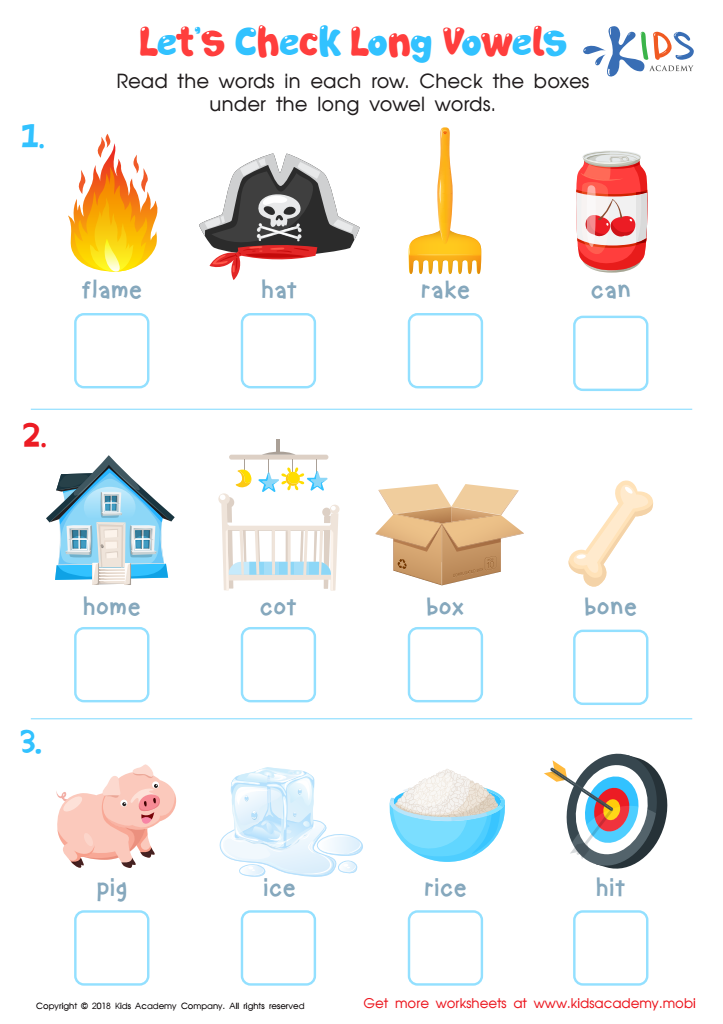

Let's Check Long Vowels: Assessment Worksheet
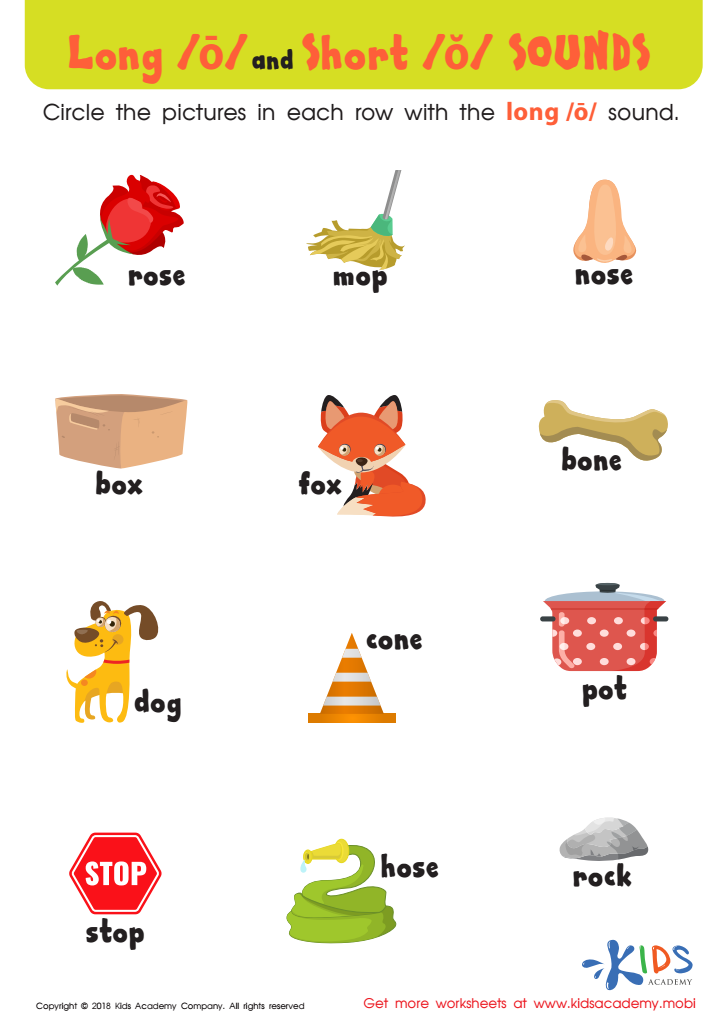

Reading: Long O and Short O Sounds Worksheet


The Short I Words Reading Worksheet
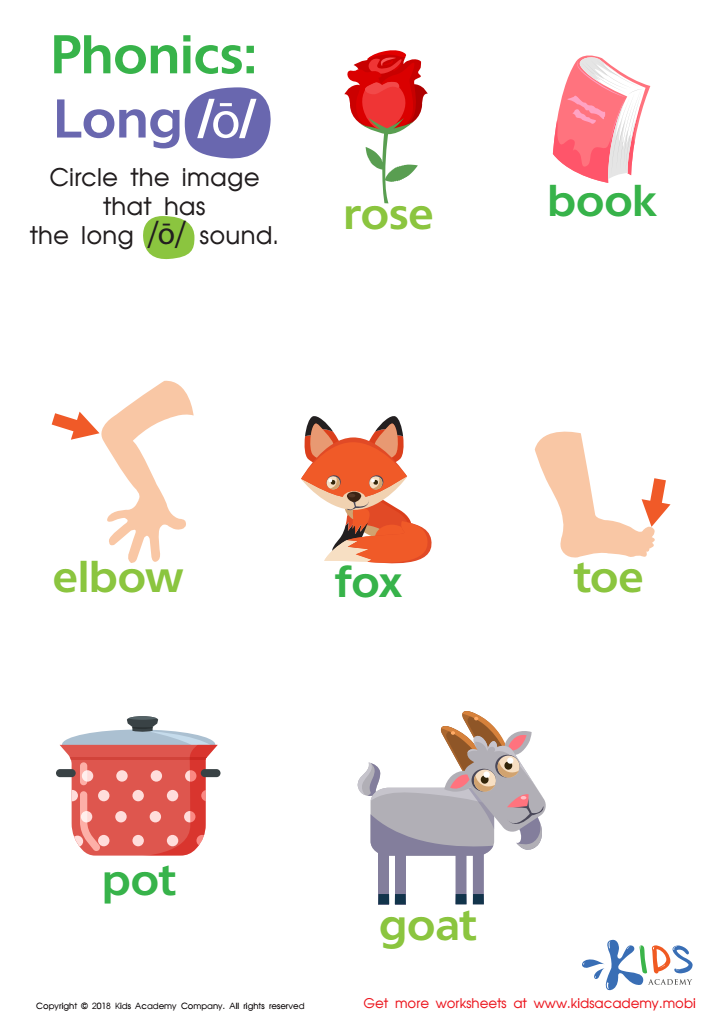

Phonics Long O Reading Worksheet


short vowels Worksheet
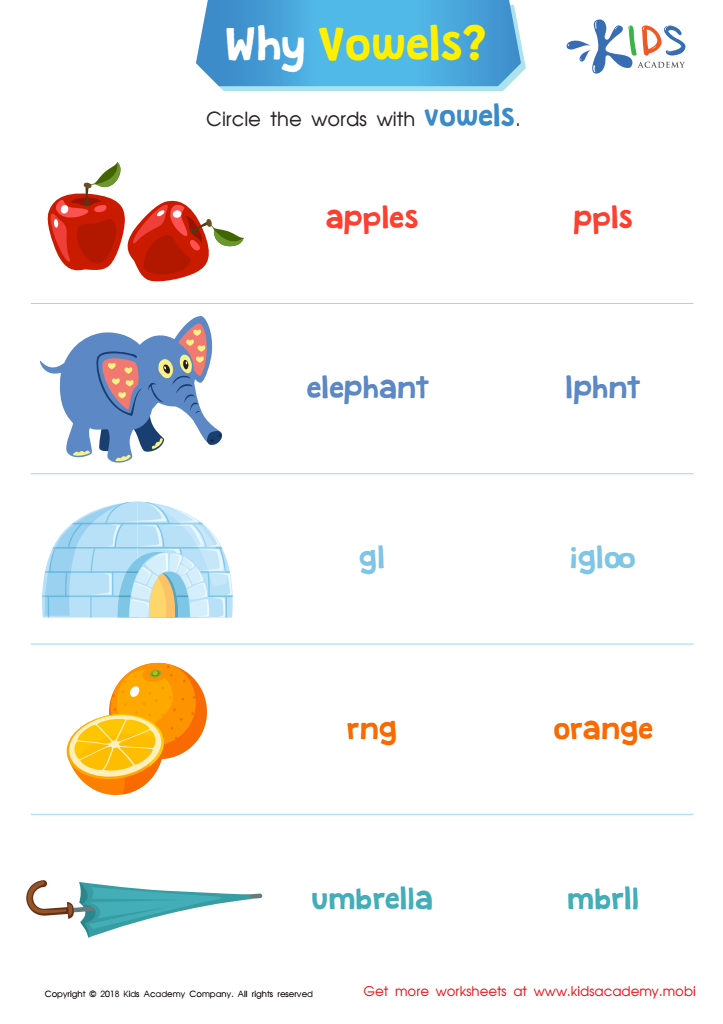

Why Vowels? Reading Worksheet
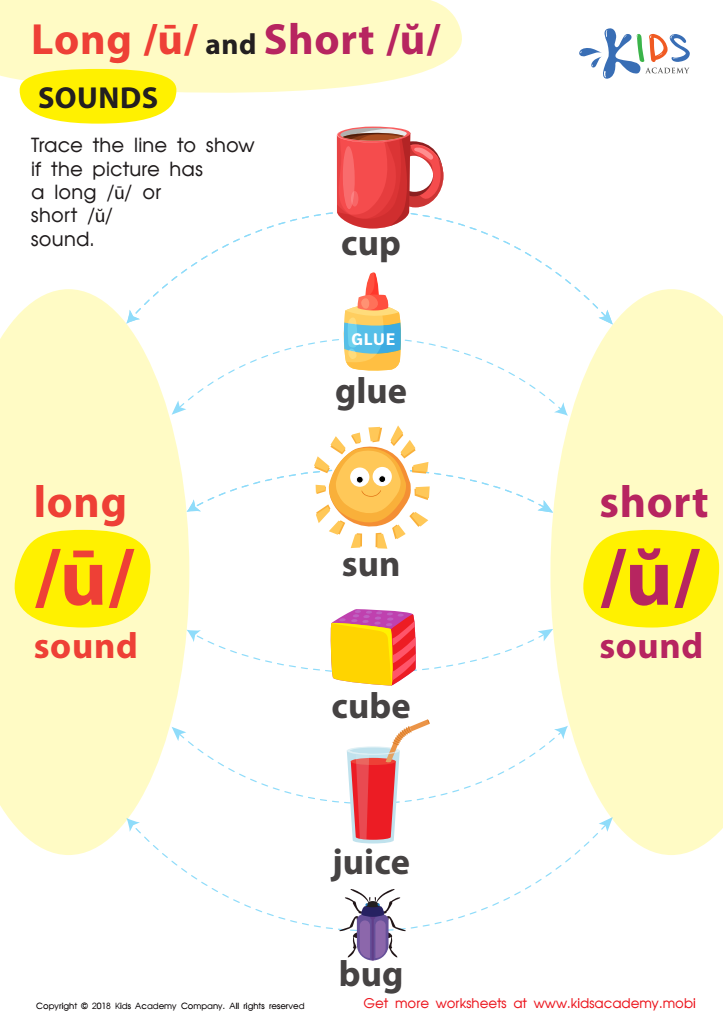

Reading: Long U and Short U Sounds Worksheet
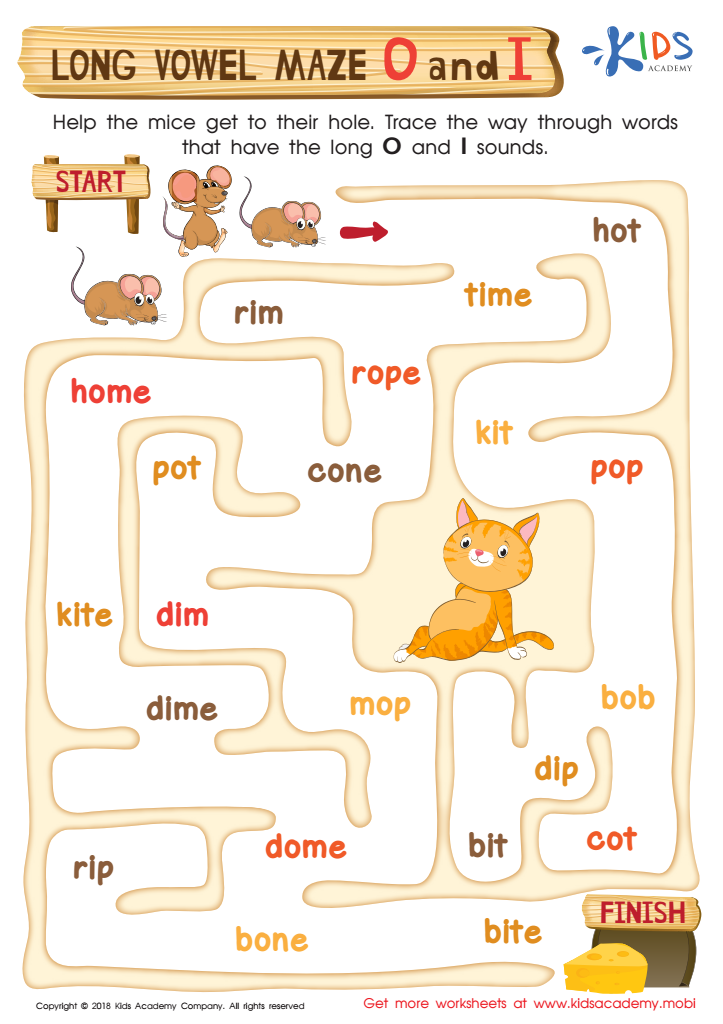

Long Vowel Maze /o/ and /i/ Worksheet
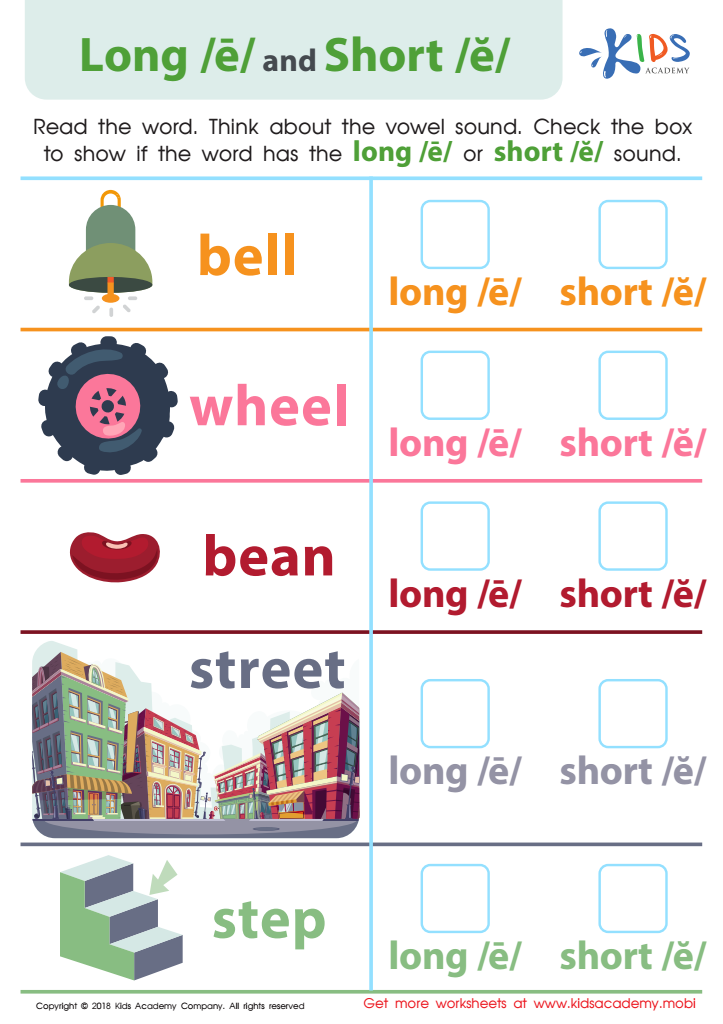

Reading: Long E and Short E Worksheet
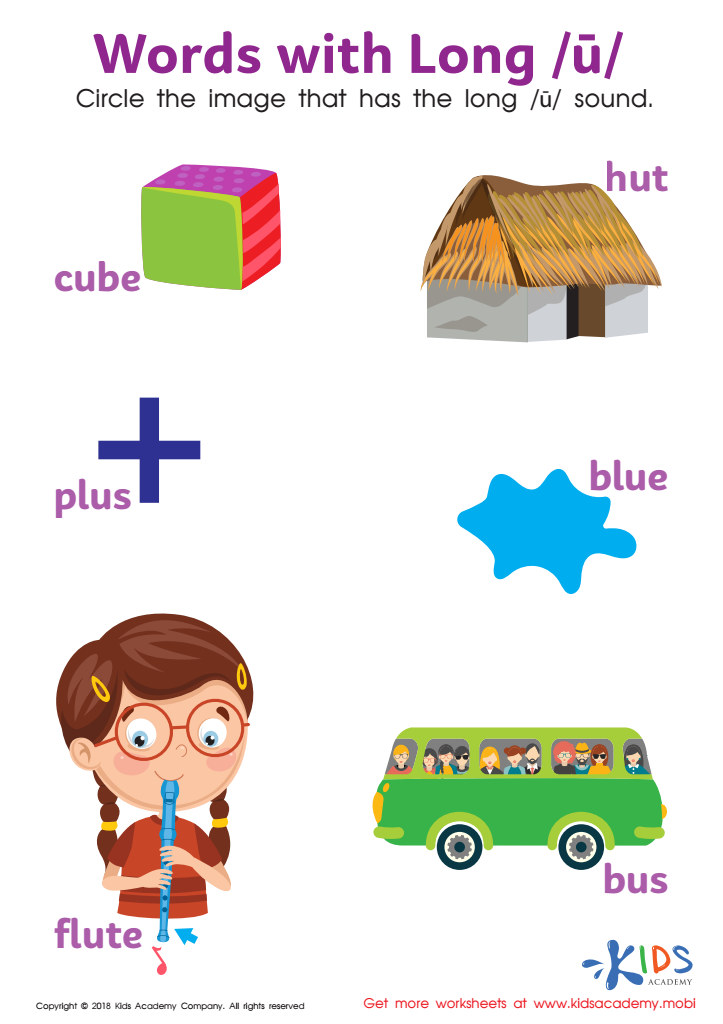

Words with Long U Reading Worksheet
Teaching reading comprehension, including distinguishing between normal, long, and short vowels, to children ages 3-8 is crucial for their literacy development. At this formative stage, young learners are beginning to understand the basics of reading and writing. Mastering vowel sounds helps them decode words, a fundamental skill for reading fluently.
Understanding the differences between vowel sounds enhances their phonemic awareness, which is the ability to hear, identify, and manipulate individual sounds in words. This skill is essential for spelling and understanding words within context. When a child can distinguish between the variations in vowel sounds, they can more accurately sound out words, improving both their reading and pronunciation.
Additionally, early literacy skills are strong predictors of later academic success. Children who develop good reading comprehension skills early are more likely to perform well in school, as reading is critical for learning in all subjects. Engaging with diverse vowel sounds supports vocabulary development, language skills, and cognitive abilities.
Carefully planned instruction in vowel sounds, combined with regular and enjoyable practice, sets a strong foundation for an effective reading journey, instilling confidence and a love for reading that extends well beyond these early years. Therefore, parents and teachers should prioritize this crucial aspect of literacy education in their young learners.
 Assign to My Students
Assign to My Students









